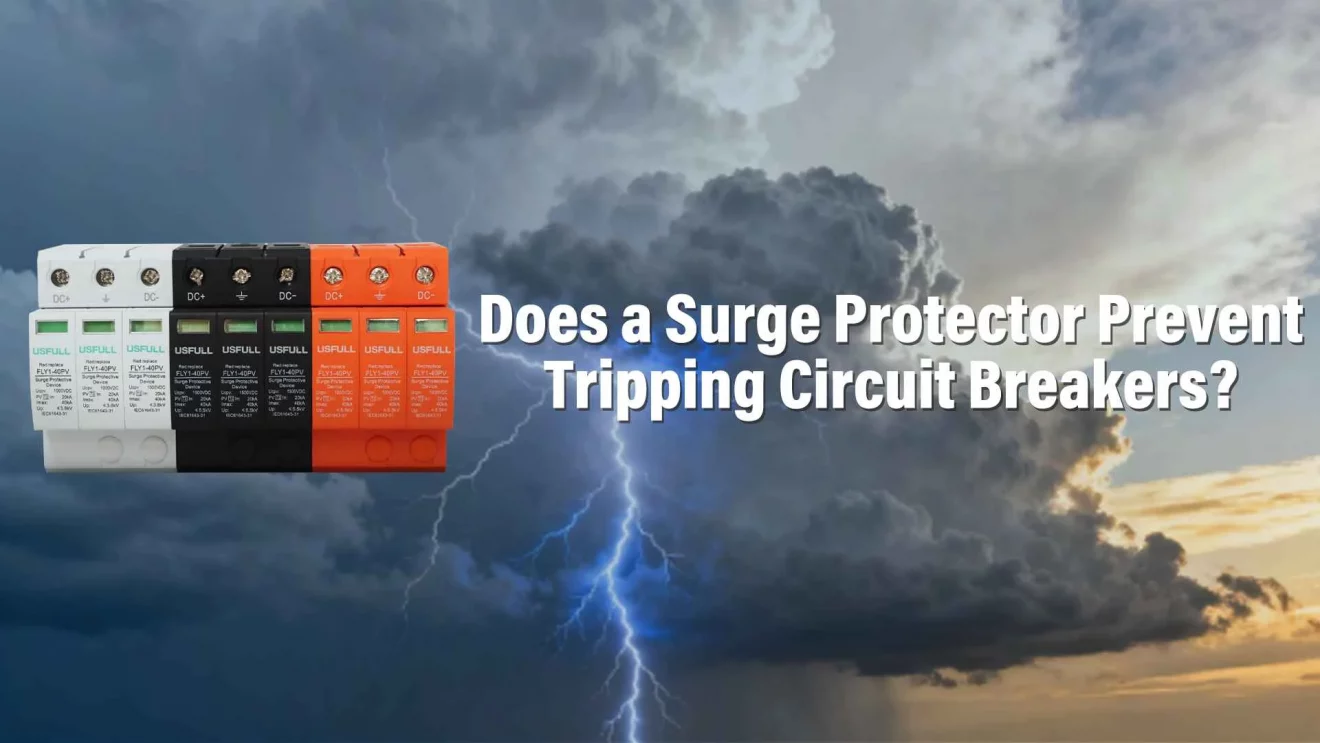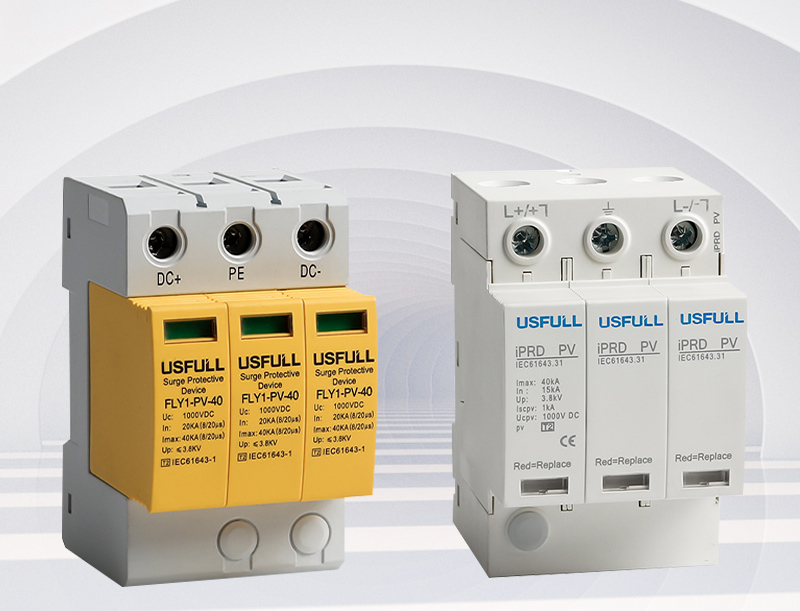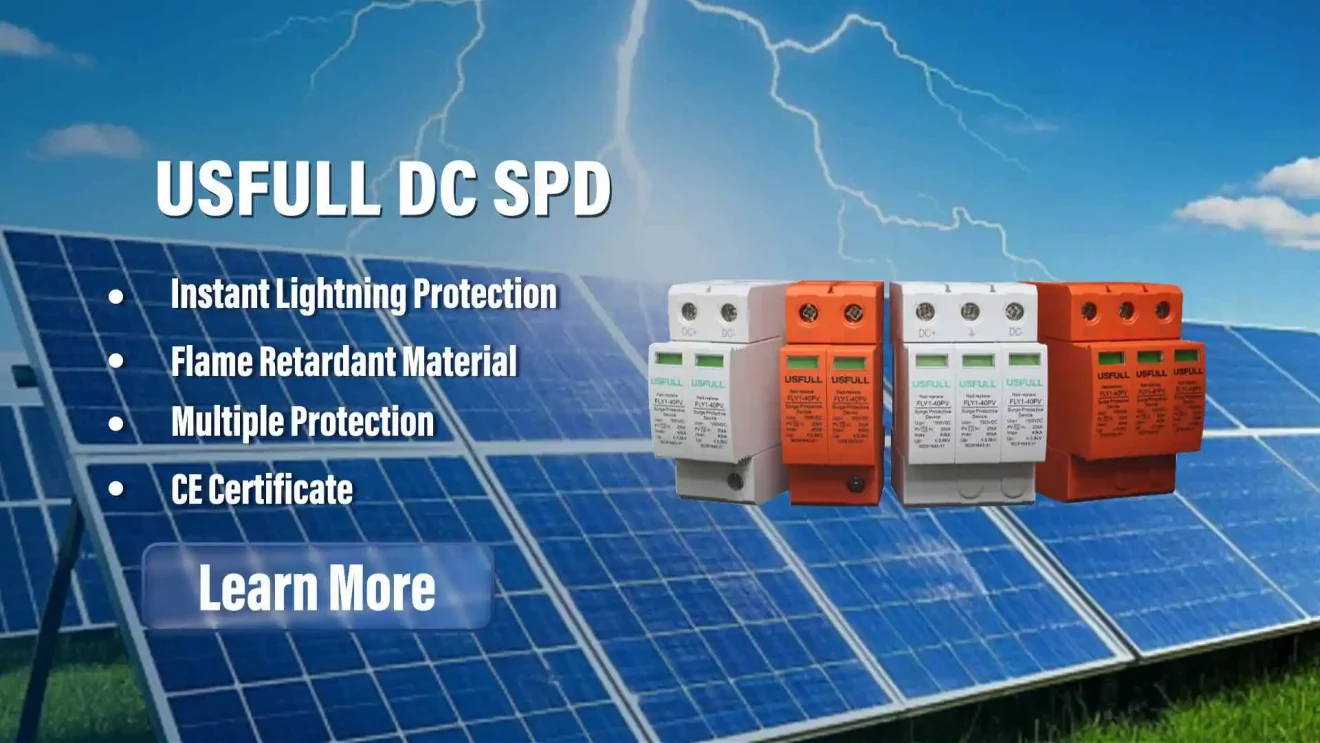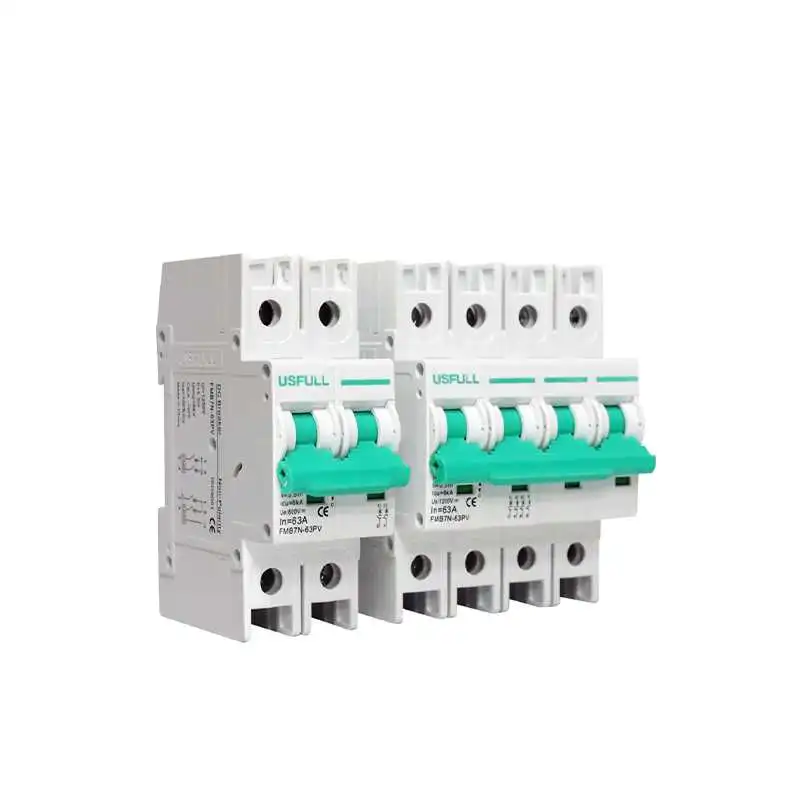Overloaded circuits cause breaker trips, risking downtime, fires, and equipment loss. Surges also threaten devices. The solution: combine circuit breakers with surge protectors for comprehensive electrical safety.
A сетевой фильтр cannot stop a breaker from tripping. Breakers prevent overloads and short circuits, while surge protectors shield equipment from dangerous voltage spikes. Together, they provide complete electrical protection.
Let’s dive deeper into how surge protectors and circuit breakers function, and how using both ensures long-lasting safety for homes, businesses, and solar power systems.
Understanding Surge Protectors
A surge protector, also known as a Устройство защиты от перенапряжения (УЗП), is designed to defend electrical equipment against dangerous spikes in voltage. These spikes may be caused by lightning, power grid switching, or equipment malfunctions. Without a proper SPD, sensitive electronics such as computers, solar inverters, and control devices can suffer irreversible damage. Businesses and homeowners alike rely on surge protectors to minimize risks of downtime, costly repairs, and safety hazards. For solar applications, DC SPDs and PV SPDs are especially important to protect photovoltaic systems from transient overvoltage events, ensuring system reliability.
Basic Working Principle of Surge Protectors
At the heart of most surge protectors is the Metal Oxide Varistor (MOV). When a voltage spike occurs, the MOV’s resistance drops, allowing excess current to safely bypass connected equipment. This redirection prevents sensitive devices from absorbing harmful surges. In solar systems, a Устройство защиты от перенапряжения постоянного тока functions similarly, but it is specifically designed for DC circuits in PV arrays. These SPDs respond in microseconds, ensuring critical equipment like solar pumping inverters remain safe. Without this protective mechanism, even minor fluctuations could shorten equipment lifespan or cause costly failures.
Types of Surge Protectors
Surge protectors come in different forms, each tailored to specific environments:
Whole-House Surge Protectors: Installed at the main electrical panel, they defend all circuits at once.
Point-of-Use Surge Protectors: Often in power strip form, protecting individual appliances
Outlet-Based Surge Protectors: Integrated directly into wall outlets.
DC SPDs / Solar SPDs: Specially built for photovoltaic systems to safeguard against DC surges.
Choosing the right surge protective device depends on application. For solar farms or pumping systems, солнечные сетевые фильтры are crucial. As a surge protective device manufacturer in China, USFULL offers tailored solutions across AC and DC protection needs.
Features of a Surge Protector
When evaluating surge protectors, certain specifications determine reliability:
Joule Rating: Measures how much surge energy the device can absorb before failure.
Clamping Voltage: The voltage threshold at which the SPD activates.
Response Time: Faster reaction equals better safety.
Indicator Lights: Show operational status.
Solar SPD devices often include thermal disconnects for extra safety. A high-quality Устройство защиты от перенапряжения постоянного тока is critical in PV systems, where continuous exposure to environmental stressors increases surge risk. Selecting an experienced surge protective device supplier ensures performance and compliance with international safety standards.
Circuit Breakers and Electrical Safety
Circuit breakers serve as the backbone of electrical safety by preventing overcurrent situations that could cause overheating and fire hazards. Unlike surge protectors, breakers respond to current overloads и short circuits, not voltage spikes. In both residential and industrial setups, circuit breakers provide automatic shutoff when dangerous conditions arise. For businesses running solar or pumping systems, understanding the distinction between SPDs and breakers is vital: breakers protect wiring and circuits, while SPDs protect sensitive equipment. Used together, they ensure comprehensive safety and system longevity.
Function of Circuit Breakers
A circuit breaker monitors the flow of current within a circuit. If the current exceeds the safe limit, the breaker instantly disconnects the power. This prevents wires from overheating and reduces fire hazards. Unlike a солнечный сетевой фильтр, which shields against voltage spikes, the breaker safeguards against sustained current overload. Resettable breakers offer convenience compared to fuses, allowing power restoration after resolving the issue. In solar systems, specialized breakers are used alongside DC SPDs to protect PV arrays. Together, they reduce both surge and overload risks.
Types of Circuit Breakers and Their Functions
There are several types of circuit breakers, each addressing specific electrical risks:
Standard Breakers: Trip during overloads.
GFCI Breakers: Prevent shocks by cutting power during ground faults.
AFCI Breakers: Detect arc faults and reduce fire hazards.
In solar systems, breakers designed for DC circuits are paired with solar SPD devices for maximum reliability. While breakers interrupt dangerous current, SPDs prevent destructive overvoltage. Both are required in modern electrical design, especially where sensitive equipment like solar pumping inverters is involved.
Common Reasons for Circuit Breaker Tripping
Circuit breakers may trip for reasons such as:
Overloaded circuits – too many appliances on one line.
Short circuits – live and neutral wires touching.
Ground faults – live wires contacting grounded surfaces.
Faulty equipment – malfunctioning devices drawing irregular current.
While a surge protector cannot stop these events, pairing SPDs with breakers reduces the risk of equipment damage from unrelated surges. For solar systems, DC surges caused by lightning or switching can damage PV inverters, so PV SPDs remain essential even if breaker trips occur.
How Surge Protectors and Circuit Breakers Interact
Although distinct, surge protectors and circuit breakers complement each other. Breakers cut current when unsafe loads occur, while SPDs prevent voltage spikes from reaching equipment. In a solar pumping installation, a DC SPD shields the inverter, while the breaker ensures system wiring is never overloaded. Together, they form a complete protection strategy. Relying on one without the other leaves critical vulnerabilities.
Can Surge Protectors Prevent Tripping?
The answer is no. Surge protectors cannot prevent breakers from tripping. Breakers are designed to interrupt excess current, while surge protectors only react to voltage spikes. For example, if you overload a circuit with too many appliances, the breaker will trip regardless of whether an SPD is installed. However, the SPD ensures that sensitive equipment doesn’t suffer surge damage when the breaker restores power.
Limits of Surge Protectors in Preventing Trips
SPDs are limited to voltage protection—they do not detect overloads, ground faults, or short circuits. These conditions are handled exclusively by breakers. Misunderstanding this can lead businesses to believe surge protectors alone are sufficient. In reality, both are essential. For solar power systems, where both DC surges and current faults are possible, combining солнечные сетевые фильтры with DC circuit breakers is the only reliable approach.
Enhancing Protection with Surge Protectors
To maximize protection, businesses should adopt a layered defense: breakers for overcurrent protection, and SPDs for surge protection. In solar applications, this includes installing PV SPDs at key points: combiner boxes, inverters, and the main distribution board. By sourcing from a trusted surge protective device supplier, companies gain certified, reliable solutions tailored to their system needs.
Surge Protection in the Whole House
Whole-house surge protectors defend all devices connected to a building’s electrical system. Unlike plug-in strips, they cover every outlet, including hardwired equipment like HVAC, pumps, and solar inverters. Installed at the main panel, these devices block damaging surges before they spread. For businesses, this approach is more cost-effective and reliable than managing multiple small protectors across different circuits.
Benefits of Whole-House Surge Protectors
Whole-house SPDs deliver multiple advantages:
Complete coverage for every circuit and device.
Lower replacement costs, as one device protects many.
Increased safety, reducing fire risks from surge-damaged equipment.
For solar-powered businesses, using Устройства защиты от перенапряжения постоянного тока at the PV array and whole-house SPDs at the main panel ensures layered protection. Partnering with a surge protective device manufacturer in China like USFULL guarantees scalable, customized solutions for industrial and residential applications.
Installation Considerations for Whole-House Protectors
When installing a whole-house surge protector, correct placement at the main electrical service panel is crucial. Compatibility with system voltage, grounding quality, and compliance with electrical codes must be verified. In PV systems, integrating солнечные СПД directly at combiner boxes enhances resilience. Professional installation from experienced providers ensures reliability, preventing risks associated with improper wiring or misapplication.
Tips for Electrical System Maintenance
Regular electrical maintenance is essential to ensure safety and prevent downtime. Breakers and SPDs require routine checks to verify functionality. For solar systems, inspecting СПД постоянного тока after storms or grid disturbances is especially important, as these devices absorb surges over time and may need replacement. Preventive care extends equipment life and lowers total operating costs.
Routine Checks and Balancing
Annual system checks should include:
Testing breaker functionality.
Inspecting SPD indicator lights.
Monitoring circuits for overheating or imbalance.
For solar arrays, checking PV SPDs ensures ongoing protection from lightning-induced surges. A failing surge protector leaves equipment vulnerable even if breakers are functional.
Identifying and Addressing Electrical Hazards
Hazards such as overloaded outlets, faulty wiring, or buzzing devices should never be ignored. Quick intervention prevents costly damage. In solar pumping systems, identifying risks early—such as worn DC breakers or aged SPDs—ensures stable operation. Reliable suppliers provide replacement солнечные сетевые фильтры и Устройства защиты от перенапряжения постоянного тока, keeping your system compliant and safe.





